Transportation Advisory Team Introduction
On June 24, 2019, Mayor Castor kicked off the Transportation Advisory Team. The challenge for this team was to recommend approaches to address a number of long-standing as well as emerging mobility-related issues facing Tampa and its surrounding areas. This is the final set of recommendations generated by the Transportation Advisory Team for consideration by the Mayor.
General Findings and Recommendations¶
The findings and recommendations in this section are intended to be global in nature and are intended to establish a roadmap for the five strategic recommendations.
- Elevate and strengthen transportation functions in City government through an administrative-level reorganization. Consolidate transportation-related functions under one City Administrator. Ensure that the City can attract and retain high-quality transportation professionals with sufficient resources to deliver a world-class transportation system. Enhance coordination and streamline the decision-making between the Department of Transportation and Stormwater Services with the Planning & Development Department.
- Immediately begin working to further develop the Citywide Mobility Plan, called Tampa M.O.V.E.S. (Mobility, Opportunity, Vision, Equity, and Safety). This plan will outline transportation objectives and initiatives for the next 30 years, with an emphasis on memorializing the City’s strategic vision to effectively leverage the ‘All for Transportation’ surtax revenue. And meet our mobility goals through a community engagement program. This engagement will outline a clear vision for our city-- one that our residents are demanding.
- Perform a comprehensive review of the City’s Land Development Code and identify recommendations to better align land use, transportation, and mobility policies with the City’s adopted Comprehensive Plan goals and objectives. A particular focus should be placed on policies concerning density, parking, and affordable housing. A cross-departmental team will be established to participate in this effort.
Transportation Capital Prog. FY20 Map

1. Transform Transit System¶
Expanding transit service and implementing new, dedicated right-of-way transit options are the most critical actions the Mayor and City can take to maintain a good quality of life for residents and ensure continued prosperity for people and businesses in Tampa. The City must resolve the disconnect between the City's Comprehensive Plan and development patterns, continue coordination between transportation agencies, integrate and allow for new technology, and develop a citywide mobility plan to establish how to use the right-of-way to maximize mobility now and in the future. With the new "All for Transportation" surtax funding, the City is positioned to achieve unprecedented development of a multimodal transit system and should immediately begin the work of building a multimodal transit network.
There is a sense of urgency to implement projects. The Mayor needs to pick some transformational major projects, make a plan to implement, and champion them.
Following are the recommendations related to implementing strategic transit projects.
Recommended Action Items¶
- Position the Mayor to serve as a vocal champion for frequent, reliable, and equitable transit service that increases access to jobs, education, entertainment, and regional connections and maximizes the opportunity for transit-oriented development. Specific mode and alignment decisions should be determined through a technically sound, data-driven, and transparent planning and public engagement process that considers all transit modes. Because there are already various studies and projects underway, the role of the Mayor and the City may vary slightly depending on the project in question, however, the successful achievement of the recommendations largely depends on the Mayor's leadership and direct involvement.
- Focus on implementing the following strategic transit initiatives:
- Modernize and Expand Streetcar Service. The City should a) commit to aggressive implementation of the existing plan to modernize the streetcar by increasing capacity and speed to extend into Tampa Heights, b) begin planning for the extension beyond Tampa Heights (Phase 4), and c) work with HART to develop a long term funding approach for streetcar system operations, focusing on maintaining high-quality levels of service and free and/or reduced fares.
- Leverage CSX Rail Lines. HART has proposed an Initial Assessment of the CSX rail lines which is targeted to begin in 2020 and be funded by surtax revenue. The Initial Assessment will determine the viability of the rail lines for future passenger service. Public engagement and technical analysis are needed to determine the type of service (local, inter-city, regional, etc.), necessary land-use changes, and appropriate redevelopment opportunities around future stations.
As a HART Board Member, the Mayor and City staff should be integrally involved in the Initial Assessment. Depending on the outcome of the Initial Assessment, the City should work with HART and Hillsborough County to perform a comprehensive corridor study to determine the most appropriate and feasible type of service to be deployed on the CSX corridor. It is important that the City work to ensure that the transit service selected will be the most appropriate to serve the City's transportation needs, and most importantly, that there is broad-based community engagement and community land use planning incorporated as an integral part of the project.
- Connect Westshore, Downtown, and USF. Begin planning and project development for major projects along key transit corridors starting with the connection from Downtown to Westshore and Downtown to USF.
For the Downtown to USF route, HART has begun a BRT study for this connection. As a HART Board Member, the Mayor should be actively involved in the outcome and in advancing the project forward. At the same time, the City can begin to evaluate "transit oriented development" options along the corridor that would maximize the amount of walkable residential, business, and leisure space nearby. For the Downtown to Westshore link, the City should work with HART to begin a feasibility study.
In connection with these identified priorities, the City can identify additional connection corridors and help to facilitate a pilot demonstration project in coordination with HART and other agencies.
- Expand HART Bus Service: Traditional bus service is a critical backbone of a strong transportation system. It also can be relatively quick to implement. The City should work closely with HART to implement increased access to frequent and affordable transit service with a special focus on a) providing more economic opportunities, b) connecting neighborhoods to jobs, and c) prioritizing connections to affordable housing.
Additionally, the City should prioritize increasing frequencies on existing routes and establishing new routes where service is inadequate, especially in economically disadvantaged areas.
- Establish key intermodal centers. The Mayor should strongly influence efforts to establish intermodal transportation hubs in Westshore, Downtown, and the USF area, prioritizing locations that enable connection to local and regional systems, provide opportunity for dense, urban development, and attract public-private partnerships. The Mayor should work with FDOT to accelerate the planning and implementation of the Westshore Intermodal Center at the intersection of Trask and Cypress Streets. The Mayor should work with FDOT to leverage City resources and assets to secure sites for remaining intermodal centers in Downtown and the USF Area.
- Connect Tampa to Orlando: The Mayor should advocate for a rail connection between Orlando and Tampa.
- Develop specific, data-driven performance goals for transit corridor planning and implementation. Measure and report performance annually.

2. Reimagine Trails & Greenways¶
Trails and Greenways are an important piece of an urban, multimodal transportation system that must be integrated with transportation planning, implementation, and operations to be a useful part of the transportation mobility network.
The locations and designs of trails are important and impact user experience, and integrating the contextual design with surrounding land uses is key to trails and greenways success.
Following are the recommendations related to integrating the existing trails system into the transportation network to enable viable active transportation mode alternatives.
Recommended Action Items¶
- Integrate the planning and implementation function for City trails and greenways into the City's Transportation and Stormwater Services Department.
- Update the citywide greenways and trails maps as a component of the Citywide Mobility Plan.
- Ensure that the planning of greenways and trails is performed with an eye to providing a viable transportation option, not simply a recreational function, and is consistent with the guiding principles of the Citywide Mobility Plan.
- Develop specific performance goals for trails and greenways planning and implementation.

3. Embrace Vision Zero¶
Safety is a top priority in Mayor Castor's administration focused on protecting all City residents, businesses, and visitors. Vision Zero is "a strategy to eliminate all traffic fatalities and severe injuries while increasing safe, healthy, equitable mobility for all. First implemented in Sweden in the 1990s, Vision Zero has proved successful across Europe and is gaining momentum in major American cities."
Vision Zero should be adopted as a critical policy platform through which all transportation and transit improvements are realized. The effort will benefit from proactive community engagement and increased coordination with community partners.
The City should work with the Hillsborough MPO to build upon the Vision Zero Action Plan with the City's own Vision Zero Action Plan. It's important that the Mayor takes a strong position on Vision Zero.
Following are the recommendations related to the City of Tampa's Vision Zero goals:
Recommended Action Items¶
- Formalize Vision Zero as a citywide policy priority with Mayor Jane Castor as a vocal advocate. Include policy statements that support the following:
- Safety and the preservation of human life is the City's highest priority.
- Every traffic death is preventable.
- The transportation system should be safe for all road users, for all modes of transportation, in all communities, and for people of all incomes, races, ethnicities, ages, and abilities.
- People are inherently vulnerable and speed is a fundamental predictor of crash survival. The transportation systems should be designed for speeds that protect human life.
- Attention should be paid to protect the most vulnerable road users such as pedestrians and cyclists.
- Transportation and land use development policies, standards, programs, and design decisions should be reviewed and updated to prioritize preserving lives and implementing supporting infrastructures such as sidewalks, street lighting, and mid-block crossings.
- Safe human behaviors, education about and enforcement of safety rules, and smart mobility technologies are essential contributors to a safe system.
- Vision Zero principles should be instilled as a culture.
- The City should join the Vision Zero Network which is a collaborative campaign aimed at building momentum and advancing the shift toward safe, healthy, equitable mobility for all. The Network brings together local leaders in health, traffic engineering, police enforcement, policy, and advocacy to develop and share strategies, policies, and practices that make Vision Zero a reality.
- Develop a City of Tampa Vision Zero Action Plan that focuses on implementation and includes a public engagement campaign in coordination with the MPO's ongoing efforts.
- Update the City's Land Development Code to incorporate Vision Zero principles.
- Create a City of Tampa Vision Zero Coordinator position to champion the program and coordinate with all affected City departments such as Transportation and Stormwater Services, Police, Planning & Development, and Parks & Recreation.
- The City should immediately begin projects to close the gap on key sidewalk connections that link neighborhoods to public schools, transit, and vulnerable communities; set a goal and immediately begin working to expand the number of safe pedestrian crossings in the City, and take a bold and aggressive approach to implement transformative complete streets throughout the City.
- Work with FDOT, Hillsborough County, and THEA to develop, prioritize, fund, and implement safety projects on high crash corridors on State, County, and other agency facilities within City limits.
- Develop a City-sponsored program that makes it easier and simpler for engaged community members to work with the City to host activities and events that activate city streets as dynamic public spaces.

4. Reinvent Urban Parking¶
Parking is a key piece of the transportation network and parking policies must support transit, urban development, and affordable housing.
If Tampa is going to be a world class city, we need world class mobility services. We need to kick it up a notch! Mobility hubs are the way of the future.
Following is an outline of the recommendations related to urban parking and mobility as it relates to transportation and parking technology solutions, mobility applications, and integrated planning.
Recommended Action Items¶
- Establish and implement a strategic vision for urban parking systems management as a critical component of the City's mobility network.
- Integrate the planning and operations functions for the City's parking assets into the Transportation and Stormwater Services Department.
- Develop specific, data-driven performance metrics for urban parking management that support strategic transportation goals.
- Identify resource recommendations to enable improved coordination and integration of parking assets and tools within the City organization.
- Identify and implement best practices in urban parking management. Use a “City as a Lab” approach to try new ideas and test innovation in the realm of parking management with the goal of developing a world-class system. Increase the use of technology and wayfinding to expand awareness of, and access to, parking options and other multimodal options such as bus and rail transit, micromobility options, bicycle share, car share, car/vanpool, shuttles/ circulators, walking, bicycling and driving.
- Develop a program to modernize the City's off-street parking requirements. The City's off-street parking requirements should promote shared parking opportunities based on a dynamic parking plan which incorporates the City's expanding transit and multimodal facilities networks, land use, parking demand, and parking costs. Specific recommendations include:
- Evaluate current minimum parking requirements for affordable housing developments in an effort to reduce housing costs.
- Establish maximum parking requirements and consider eliminating parking requirements for redevelopment projects downtown.
- Deploy shared parking programs to improve availability and maximize usage of current public and private parking resources.
- Initiate a study to reevaluate the existing parking rates, and consider modified parking rates and structures to achieve strategic mobility goals.

5. Collaborate With Community¶
Over the next decade, with new leadership and a new dedicated source of revenue, the City's transportation network is going to transform. Residents, neighborhood leaders, the business community, local activists, and community partners must all have a voice in the realization of our common vision to be a connected, multimodal, safe, and thriving city. The City must deploy more active and consistent neighborhood and community engagement practices throughout the implementation of transportation projects citywide.
We have a tendency to only engage the community when we need them, such as when we are planning a specific project. We need to continually engage advocates to build trust in our government. We need to listen first, and think about the philosophy about how the City performs public engagement.
Following are recommendations related to an effective and inclusive approach to neighborhood engagement.
Recommended Action Items¶
- Designate a Neighborhood Transportation Liaison position to listen and build relationships with citizens by working on transportation issues at the grassroots level. This position will work with citizens, neighborhood leaders, and community advocates to build consensus and support for programs and projects.
- Designate a Transportation Media Relations/Public Information Officer to strategically communicate the City's transportation goals with the media and public, provide information on the development and construction of transportation projects, and leverage media opportunities to inform and engage residents.
- Develop policies and recommendations to support an enhanced transportation neighborhood engagement program.
- Develop a network of neighborhood-level transportation champions to more fully listen to community needs and concerns. This group could also help carry back the City's message on transportation vision and implementation on a personal “grassroots” level.
- Enhance the role of community engagement in the design outcomes and implementation of mobility projects. This program should include more robust stakeholder outreach, visualizations, community workshops, social media outreach, town halls, and more.
Meet the Team¶

Clarence Eng
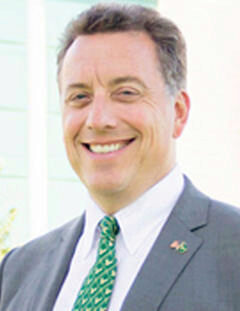
Robert Bertini, Ph.D., P.E.
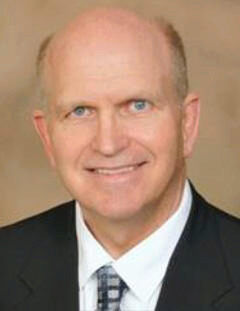

Christina Barker
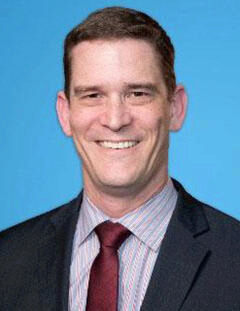
Ben Limmer
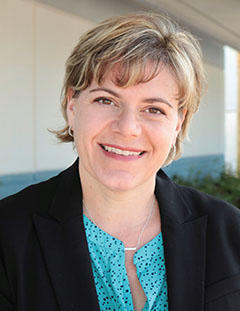
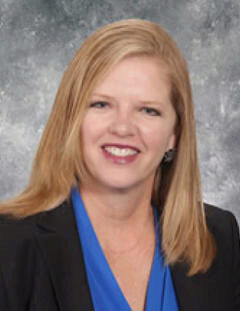
Cindy Stuart

Steve Simon
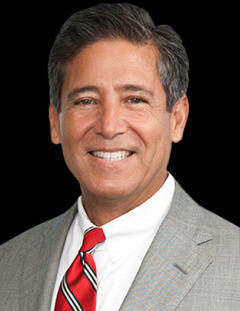

Cesar R. Hernandez
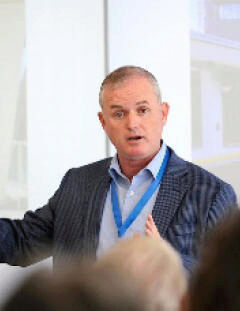
Bob O'Malley
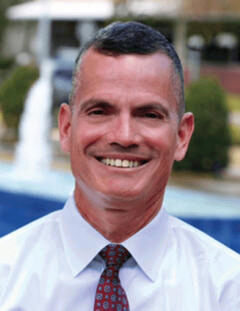
Mark Sharpe

Gena Torres
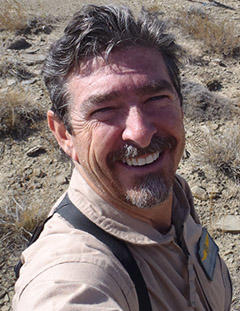
Darrell Egner
